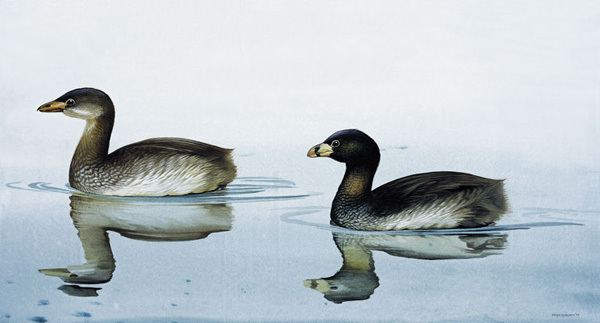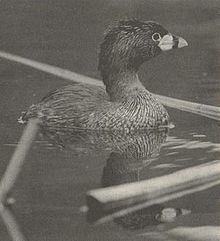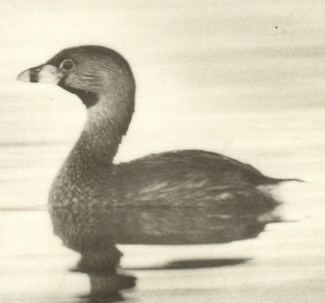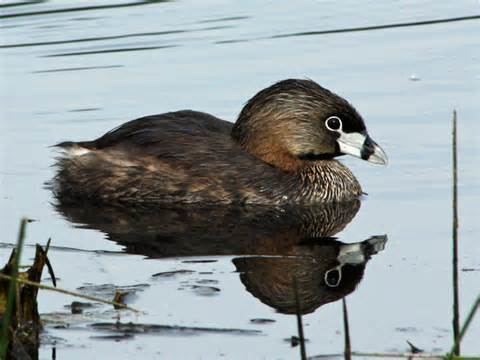Order Podicipediformes Higher classification Podilymbus | Phylum Chordata Family Podicipedidae Scientific name Podilymbus gigas Rank Species | |
 | ||
Similar Bird, Colombian grebe, Podilymbus, Grebe, Alaotra grebe | ||
The Atitlán grebe (Podilymbus gigas), also known as giant grebe, giant pied-billed grebe, or poc, is an extinct water bird, a relative of the pied-billed grebe. It was endemic at the Lago de Atitlán in Guatemala at an altitude of 1700 m asl. It was described in 1929 by Ludlow Griscom based on a specimen collected in 1926 and had been overlooked in the past. American ecologist Anne LaBastille observed the decline of this species over a period of 25 years. It was declared extinct by 1990.
Contents
Description

The Atitlán grebe reached a length of about 46–50 cm. The call and appearance were similar to the much smaller pied-billed grebe. The bill was large and pied but the color varied from white in the spring to brown in other seasons. The plumage was mainly dark brown with white-flecked flanks and grey on the ears. The underparts were dark grey flecked with white. The head was almost black and the neck was glossy flecked with dark brown in the spring and white in the winter. The legs were slaty grey. The bill had a bold black vertical band in the middle. The irises were brown. It had small wings and was flightless.
Reproduction
They laid a clutch of 4 to 5 white eggs. Both parents shared the rearing of the hatchlings.
Extinction

The decline of the Atitlán grebe began in 1958 and again in 1960 after smallmouth bass (Micropterus dolomieu) and largemouth bass (Micropterus salmoides) were introduced into Lake Atitlán. These invasive species reduced the crabs and fish which the grebes depended on for food and the fish even killed the grebe chicks. The population of the Atitlán grebe declined from 200 individuals in 1960 to 80 in 1965. Thanks to the conservation efforts of Anne LaBastille, in 1966 a refuge was established where this species was able to rebound. The population recovered to 210 in 1973. Unfortunately after the 1976 Guatemala earthquake, the lake bed fractured. An underwater drain led to a fall of the water level and to a further severe decrease of the number of grebes. In 1983 only 32 individuals were left, of which the largest part were hybrids with the pied-billed grebe. The last two birds were seen in 1989, and after they disappeared the Atitlán grebe was declared officially extinct.

